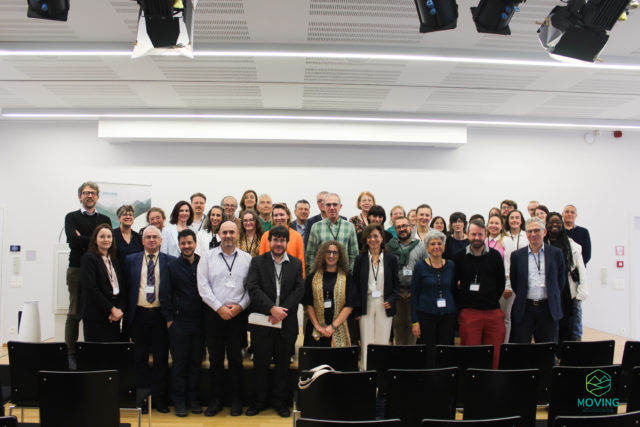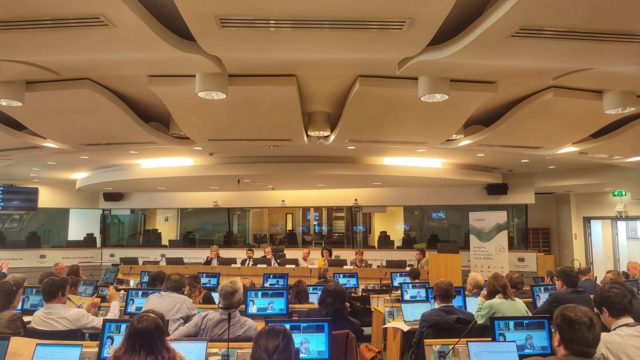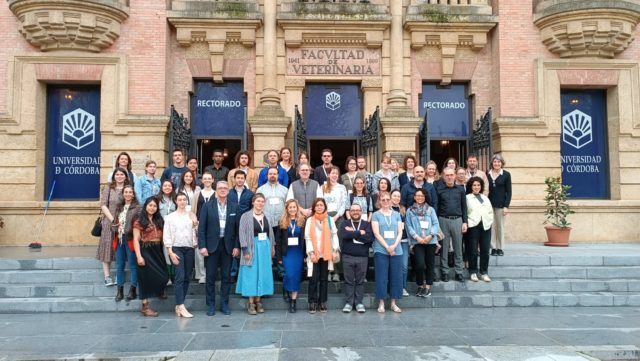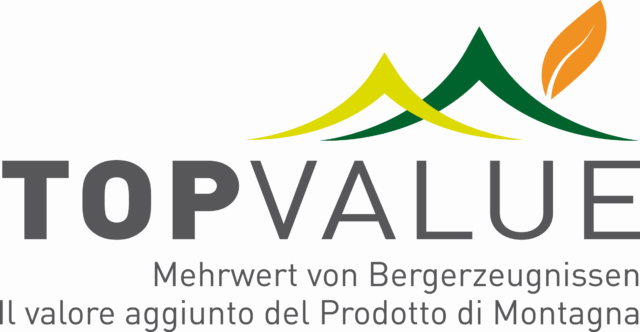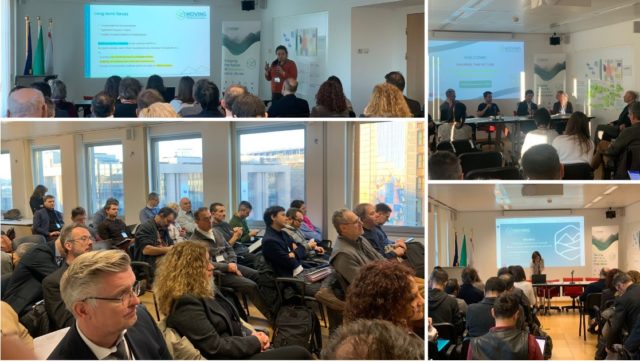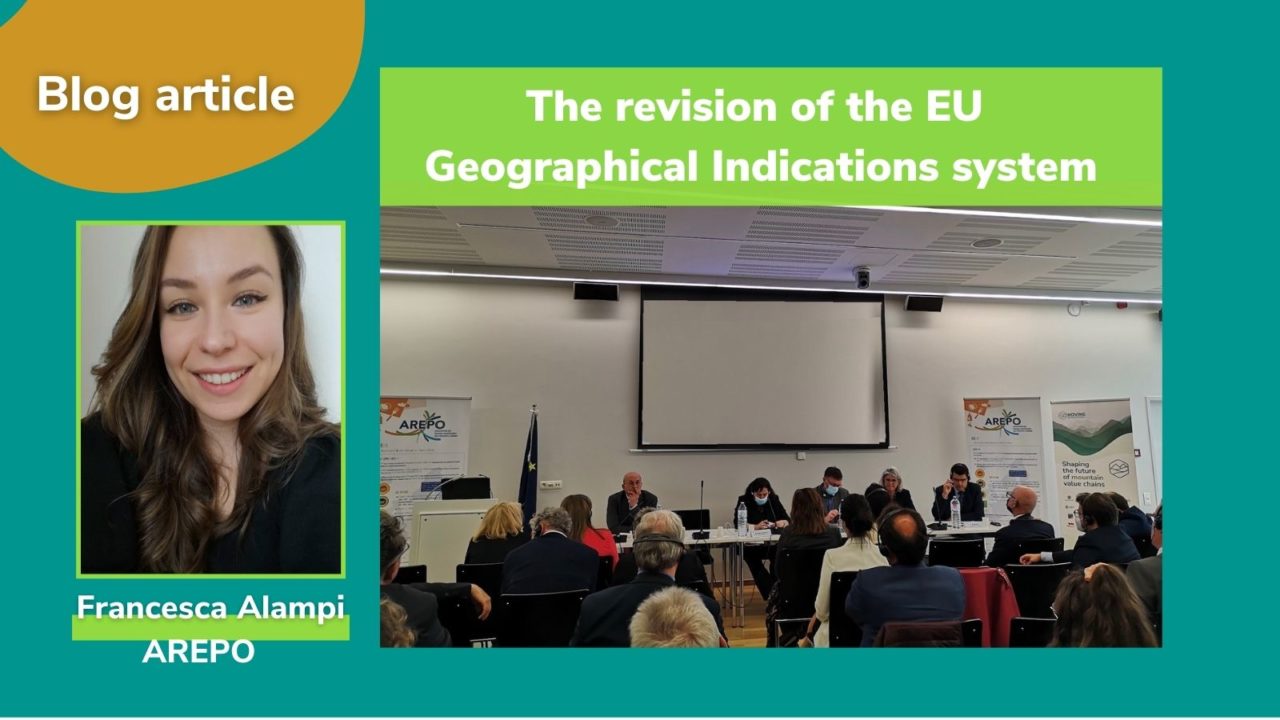
The revision of the EU Geographical Indications (GIs) system was the focus of AREPO’s General Assembly (GA) held in Brussels on 28 April 2022. Member regions and producers of AREPO had the occasion to exchange on the topic with the EU Institutions, as well as to receive an update on the work carried out by the MOVING project.
On 31 March 2022 the European Commission (EC) published a proposal for a regulation on the revision of the EU GI system, aiming to increase the uptake of GIs across the EU to benefit the rural economy, and to ensure their effective protection to fairly reward producers for their efforts.
The new legislative proposal intends to create an unitary system of EU GIs, by harmonising provisions concerning agricultural products and foodstuffs, wines and spirit drinks, so far covered by four different regulations (Regulation (EU) No 1151/2012; Regulations (EU) No 1308/2013, (EU) 2017/1001 and (EU) 2019/787). A single set of procedural rules for all sectors, should ensure coherence and make the GI system more understandable.
Furthermore, with the intention to reduce the administrative burden, the EC proposes to rely on the European Union Intellectual Property Office’s (EUIPO) technical assistance in the scrutiny of applications for registration, amendment of product specifications, and also in opposition procedures. The EC will be able to entrust these tasks to EUIPO via delegated acts.
This adds to the simplification of procedures for the modification of GI specifications achieved under the new Common Agricultural Policy (CAP) regulations, with the distinction between Union amendments and standard amendments. While the former will require an opposition procedure at the Union level, the latter will be dealt with at Member State (MS) level.
As mentioned before, the new framework aims to increase GIs protection, especially on the internet, namely in respect of sales via online platforms and the protection against bad faith registration and use of GIs in the domain name system. In addition, it clarifies the legal framework for GIs used as ingredients.
Among the main novelties, the legislative proposal allows producers to agree on sustainability undertakings to be included in their product specifications. TheEC does not set out a definition of sustainability standards nor the criteria for the recognition of existing sustainability standards, aspects that may be done through delegated acts at a later stage.
It is worth pointing out that the improvement of GI protection and the possibility to voluntarily include elements of sustainability in the GI product specifications were already introduced along the CAP, adopted in December 2021. Plus, the new Common organisation of the markets (CMO) Regulation allowed for the extension of the supply regulation instrument (already existing for cheeses, hams and PDO/PGI wines) to all Protected Designation of Origin (PDO) and Protected Geographical Indication (PGI) products, thus helping producers to adapt the supply of their GI product to market demand and needs.
In addition to producer groups, this proposal introduces the recognised producer groups. The latter will have to be acknowledged by MS, provided a prior agreement has been concluded between at least two-thirds of the producers of the product covered by a GI, accounting for at least two-thirds of the production of that product in the geographical area referred to in the product specification. Recognised producer groups will be empowered to manage, enforce and develop their GIs, notably by having access to anti-counterfeiting authorities and customs in all MS.
Last, the system of traditional specialities guaranteed (TSG) has been maintained and its wording improved and clarified. It is included in the chapter dedicated to Quality Schemes, together with the Optional Quality Terms (OQT) to which the term ‘mountain product’ belongs.
The OQT ‘mountain product’ highlights the specificities of a product for which the feed and the raw materials come essentially from mountain areas and for which the processing also takes place in mountain areas. Thus, its specific characteristics are essentially attributable to the environment in which it is produced, to the quality of natural resources used, and to traditional techniques and know-how employed in its production and processing.
Using this OQT is an advantage both for farmers and consumers: it enables farmers to better market the product, and it also ensures certain characteristics are clear to consumers.
Given that the OQT system is relatively new, the EC has decided to not revise it, rather adding the possibility to establish a digital system for the inclusion of these terms and schemes in order to foster knowledge of them across the EU.
EU MAP webinar: “European Quality schemes: the added value for mountain value chains”
The topic of the revision of the EU GI system will be covered in the EU MAP webinar “European Quality schemes: the added value for mountain value chains”, that will take place next 8 November from 9.30 am to 1.00 pm (CET).
Please Save the Date!
The event information will be updated shortly with the agenda and the registration form.
We remind you that this webinar will aim to:
- Present the MOVING project and publicise the EU-MAP;
- Provide an update of the new EU quality policy, according to the EC legislative proposals, and the implications to mountain value chains;
- Inform about the implementation and added value of the EU quality schemes and the implications for mountain value chains;
- Enhance the exchange, learn and interact at the EU level on heterogeneity and innovation in mountain value chains;
- Improve exchange, learning and interaction at EU level on the heterogeneity and innovation of mountain value chains.

MOVING is funded by the European Union’s Horizon 2020 R&I programme. The contents of this article do not reflect the official opinion of the European Union. The responsibility for the information and opinions expressed in it lies entirely with the author(s).


